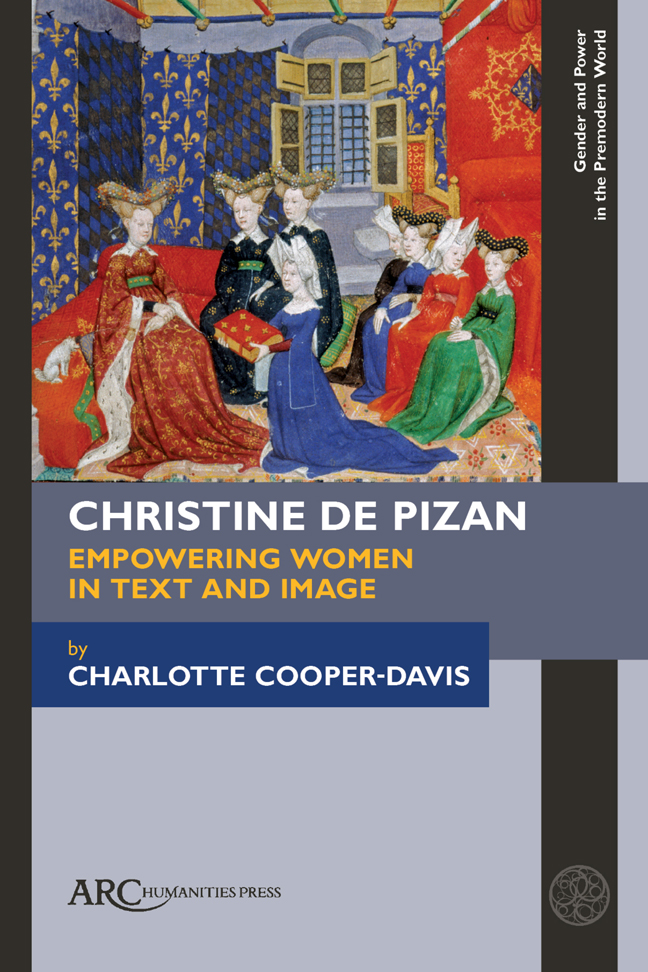Book contents
- Frontmatter
- Dedication
- Contents
- List of Illustrations
- Acknowledgements
- Abbreviations
- Note on Translation
- Introduction
- Chapter 1 Conventions, Collaboration, and Craft: Representing the Author in Christine de Pizan's Author-Manuscripts
- Chapter 2 Wisdom, Chastity, and War: The Power of Female Didactic Figures
- Chapter 3 Female Creation and Education in Le Livre de la mutacion de Fortune
- Chapter 4 Assessing the Gender of Christine's Audiences
- Conclusion
- Christine de Pizan's Illustrated Author-Manuscripts
- Bibliography
- Index
Chapter 3 - Female Creation and Education in Le Livre de la mutacion de Fortune
Published online by Cambridge University Press: 20 February 2024
- Frontmatter
- Dedication
- Contents
- List of Illustrations
- Acknowledgements
- Abbreviations
- Note on Translation
- Introduction
- Chapter 1 Conventions, Collaboration, and Craft: Representing the Author in Christine de Pizan's Author-Manuscripts
- Chapter 2 Wisdom, Chastity, and War: The Power of Female Didactic Figures
- Chapter 3 Female Creation and Education in Le Livre de la mutacion de Fortune
- Chapter 4 Assessing the Gender of Christine's Audiences
- Conclusion
- Christine de Pizan's Illustrated Author-Manuscripts
- Bibliography
- Index
Summary
Mais il failli a son entente,
Car ma mere, qui ot pouoir
Trop plus que lui, si voult avoir
Femelle a elle ressemblable,
Si fus nee fille.
(But my father's aim was not realized, because my mother, who had much greater power than he, wanted to have a female child similar to herself. Thus I was in fact born a girl.)MANY FIGURES HAVE so far been encountered who act as teachers or guides in Christine's works, most of them women who are endowed with some kind of power. These include Christine herself, who takes on an even more explicit didactic role in the Enseignemens Moraux in which she is seen teaching her son, and who is presented as an authority that instructs the reader throughout her works, but also characters such as the goddess Othea in L’Epistre Othea who teaches Prince Hector of Troy, or the Sibyl who guides Cristine along the Chemin de lonc estude. At other times, these women aren't necessarily present as characters but simply as exemplars, as is the case with the Virgin Mary. The previous two chapters have established that intervisual connections between images of the author and other powerful figures form a key way of mutually empowering these subjects by creating links across otherwise unconnected images that allow power to be transmitted between them. We have also seen that the didactic aims of the text and/ or of the women within it are often communicated through the examples of other women. In this chapter, such connecting strategies are observed to also be at play when it comes to making links between female characters in the text, particularly those who have a didactic role. One way in which this plays out is by connecting them through their roles as mothers.
Of the many female didactic figures encountered throughout Christine's oeuvre, many are also maternal figures – one need not think further Christine and the Virgin Mary for examples. The parental function of characters is sometimes directly evoked, as will be seen with reference to the Mutacion de Fortune but is not always made explicit. In such instances, the great age of the didactic figures and their experience (such as the Sibyl in the Chemin, for instance) confers a parental role upon them.
- Type
- Chapter
- Information
- Christine de Pizan Empowering Women in Text and Image , pp. 89 - 108Publisher: Amsterdam University PressPrint publication year: 2023



